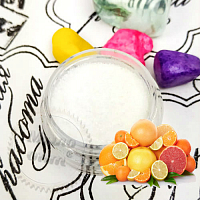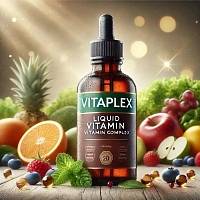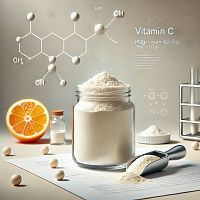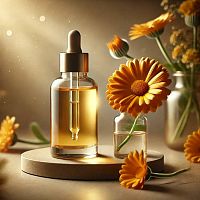-
 Absolutes
Absolutes
-
 Active Complexes
Active Complexes
-
 Actives and Peptides for Cosmetics
Actives and Peptides for Cosmetics
-
 Amino Acids
Amino Acids
-
 Food Flavorings
Food Flavorings
-
 Ayurveda
Ayurveda
-
 Vitamins
Vitamins
-
 Gelling Agents and Thickeners
Gelling Agents and Thickeners
-
 Hydrosols and Floral Waters
Hydrosols and Floral Waters
-
 Hydrolyzed Proteins
Hydrolyzed Proteins
-
 Fragrant and aromatic substances
Fragrant and aromatic substances
-
 Acids, Salts, Alcohols, and Alkalis
Acids, Salts, Alcohols, and Alkalis
-
 Preservatives and Antioxidants
Preservatives and Antioxidants
-
 Cosmetic Raw Materials
Cosmetic Raw Materials
-
 Dyes, Pearlescents, and Glitters
Dyes, Pearlescents, and Glitters
-
 Face Masks, Scrubs, and Dried Flowers
Face Masks, Scrubs, and Dried Flowers
-
 Oils, batters, macerates, oil mixtures
Oils, batters, macerates, oil mixtures
-
 Candle Supplies
Candle Supplies
-
 Melt and Pour Soap Bases
Melt and Pour Soap Bases
-
 Base for cosmetics, cream, serum, shampoo
Base for cosmetics, cream, serum, shampoo
-
 Fragrance Oils
Fragrance Oils
-
 Surfactants
Surfactants
-
 Peelings for Skin
Peelings for Skin
-
 Herbal Powders and Plant
Herbal Powders and Plant
-
 Silicones and Conditioning Surfactants for Hair
Silicones and Conditioning Surfactants for Hair
-
 Raw materials for dietary supplements
Raw materials for dietary supplements
-
 Packaging for Cosmetics and Perfumes
Packaging for Cosmetics and Perfumes
-
 Molds, Packaging, Tools
Molds, Packaging, Tools
-
 Organic Extracts
Organic Extracts
-
 Emollients for Cosmetics
Emollients for Cosmetics
-
 Emulsifiers
Emulsifiers
-
 Essential Oils
Essential Oils
L-Ascorbic Acid (Stable Vitamin C) - Ascorbyl Glucoside: The Gold Standard for Radiant Skin
Unleash the power of radiant, youthful skin with our premium L-Ascorbic Acid (Stable Vitamin C), featuring the advanced derivative Ascorbyl Glucoside. Sourced from a reputable manufacturer in France, this high-quality white powder is a stable and effective form of Vitamin C, meticulously engineered to deliver superior benefits without the common drawbacks of traditional ascorbic acid. With excellent solubility in water and glycerin, a gentle pH of 2.0-2.5, and an optimal usage rate of 1-4%, this odorless powerhouse is your key to unlocking brighter, more even-toned, and protected skin.
Description and Key Characteristics
Our L-Ascorbic Acid (Stable Vitamin C), identified by its INCI name Ascorbyl Glucoside, stands out as a superior form of Vitamin C due to its enhanced stability. Unlike pure L-ascorbic acid, which can be highly unstable and prone to oxidation, Ascorbyl Glucoside is a glucose-stabilized derivative that releases active Vitamin C gradually upon application to the skin. This controlled release mechanism ensures prolonged activity and reduced irritation, making it suitable for a wider range of skin types, including sensitive skin.
As a white powder with no discernible odor, it seamlessly integrates into various formulations without altering the aesthetic or scent profile of your final product. Its solubility in both water and glycerin offers versatility in formulation, allowing for its incorporation into a diverse array of cosmetic bases. The acidic pH of 2.0-2.5 is indicative of its stability and efficacy, aligning with the optimal pH range for skin absorption and activity.
Applications and Areas of Use in Cosmetics
L-Ascorbic Acid (Stable Vitamin C) - Ascorbyl Glucoside is a multifaceted ingredient, highly sought after for its exceptional benefits in skincare. Its stability and proven efficacy make it an indispensable addition to a wide range of cosmetic products:
- Anti-Aging Serums and Creams:
- Collagen Synthesis: Ascorbyl Glucoside is a potent stimulator of collagen production, essential for maintaining skin firmness and elasticity. Its inclusion in anti-aging formulas helps to reduce the appearance of fine lines and wrinkles, promoting a smoother, more youthful complexion.
- Antioxidant Protection: As a powerful antioxidant, it effectively neutralizes free radicals generated by environmental aggressors like UV radiation and pollution. This protective action helps to prevent premature skin aging and cellular damage.
- Brightening and Even-Toning Products:
- Hyperpigmentation Reduction: This stable form of Vitamin C is highly effective in inhibiting melanin production, making it an excellent ingredient for formulations targeting hyperpigmentation, dark spots, and post-inflammatory hyperpigmentation. It promotes a more even skin tone and a brighter complexion.
- Radiance Boost: By improving overall skin clarity and reducing dullness, it significantly enhances the skin's natural radiance, leaving it looking vibrant and healthy.
- Sun Protection Products (Adjunctive Use):
- While not a standalone sunscreen, Ascorbyl Glucoside can be incorporated into sunscreens or after-sun products to provide additional photoprotection against UV-induced damage and aid in recovery from sun exposure.
- Acne-Prone Skin Formulations:
- Its anti-inflammatory properties can help to calm irritated skin and reduce redness associated with acne. Its ability to fade post-acne marks further enhances its utility in acne-focused skincare.
- Eye Creams and Serums:
- Gentle yet effective, it can be included in eye-specific formulations to address concerns like dark circles and fine lines around the delicate eye area.
- Facial Cleansers and Toners:
- Even in rinse-off products, its antioxidant properties can offer a preliminary defense against environmental stressors, contributing to overall skin health.
The versatility of Ascorbyl Glucoside allows for its seamless integration into various product types, from lightweight serums and essences to richer creams and lotions, making it a cornerstone ingredient for formulators aiming to create high-performance skincare solutions for global consumers.
Cosmetic Recipe: Brightening & Antioxidant Vitamin C Serum
Create a powerful and stable Vitamin C serum that will brighten your complexion and protect your skin from environmental damage.
| Ingredient | Percentage | Function |
|---|---|---|
| Phase A (Water Phase) | ||
| Distilled Water | Up to 100% | Solvent, base for the serum |
| Propanediol 1,3 or Glycerin | 5% | Humectant, helps dissolve active |
| Sodium PCA (optional) | 1% | Natural moisturizing factor (NMF) |
| Xanthan Gum (or other thickener) | 0.2% | Thickener, stabilizes texture |
| Phase B (Active Phase) | ||
| Ascorbyl Glucoside | 3% | Stable Vitamin C, brightening, antioxidant |
| Ferulic Acid (optional) | 0.5% | Potent antioxidant, boosts Vitamin C efficacy |
| Phase C (Preservation) | ||
| Liquid Germall Plus (or other broad-spectrum preservative) | 0.5-1% | Preservative, prevents microbial growth |
| Phase D (pH Adjustment) | ||
| Lactic Acid (50% solution) | As needed | pH adjuster (to 3.5-4.5) |
Instructions for Preparation:
- Sanitization: Thoroughly clean and sanitize all your equipment, glassware, and containers.
- Phase A: In a heat-resistant beaker, combine distilled water, propanediol/glycerin, and Sodium PCA (if using). Sprinkle the xanthan gum slowly while constantly stirring with a mini-mixer or whisk to avoid clumps. Continue stirring until fully hydrated and a clear gel forms.
- Phase B: In a separate small beaker, add the Ascorbyl Glucoside. Add a small amount of the prepared Phase A (about 5-10% of total formula) to the Ascorbyl Glucoside and stir well until it is fully dissolved. If using Ferulic Acid, dissolve it in a tiny amount of propanediol/glycerin first, then add to the Ascorbyl Glucoside solution.
- Combine Phases: Add the dissolved Ascorbyl Glucoside solution (Phase B) back into the main Phase A beaker. Stir well to ensure uniform distribution.
- Phase C: Add the chosen preservative to the mixture and stir thoroughly.
- Phase D (pH Adjustment): Using a pH meter, measure the pH of your serum. Slowly add drops of Lactic Acid solution, stirring well after each addition, until the desired pH of 3.5-4.5 is reached. This range is optimal for Ascorbyl Glucoside activity and skin tolerance.
- Final Check: Perform a final pH check. Pour the finished serum into a clean, sanitized airless pump bottle or dark glass dropper bottle.
Recommendations for Use:
- Dosage: The recommended usage rate for Ascorbyl Glucoside is typically 1-4%. For beginners or sensitive skin, start with a 1-2% concentration and gradually increase.
- Solubility: Ensure complete dissolution of Ascorbyl Glucoside in the water/glycerin phase before combining with other ingredients to prevent crystallization.
- pH Management: Maintaining the optimal pH range of 3.5-4.5 is crucial for the stability and efficacy of Ascorbyl Glucoside. Always use a reliable pH meter for accurate adjustments.
- Packaging: Due to the light and air sensitivity of Vitamin C derivatives, even stable ones, it is highly recommended to store the finished product in airless pump bottles or dark glass dropper bottles to minimize exposure to light and oxygen, thereby extending shelf life.
- Storage: Store the finished serum in a cool, dark place, away from direct sunlight and heat. Refrigeration can further extend its shelf life.
- Patch Testing: Always recommend a patch test on a small area of skin before full application, especially for individuals with sensitive skin.
- Frequency of Use: This serum can be applied once daily, preferably in the morning, followed by a broad-spectrum sunscreen.
- Synergy: Combine with other antioxidants like Vitamin E or Ferulic Acid to enhance its stability and overall antioxidant benefits.
This recipe provides a foundation for a high-performing Vitamin C serum. You can customize it further by adding other beneficial ingredients such as hyaluronic acid for enhanced hydration or botanical extracts for additional skin benefits.
And also go to the Blog from Мыло Опт, where we share useful information about creating the right natural cosmetics
| INCI | Ascorbyl Glucoside | |
| pH | 2.0-2.5 | |
| Other | ||
| Color product | white | |
| Descriptio smell | Without smell | |
| Features | All information presented on the site is for reference only | |
| Input percentage | 1-4% | |
| Minimum count | 1 | |
| Name | L-ascorbic acid (stable vitamin C), 2 g | |
| Packaging | container for transportation | |
| Packing | 2 grams | |
| Solubility | in water, glycerin | |
| Type | vitamins | |
| View | powder | |
| Valid until | 10.2026 | |
-
Date:8 DecemberAuthor:Серафима, ТетиевReviews
Замовляю тут інгредієнти вже не перший раз, завжди все на вищому рівні. Рекомендую цей магазин усім!
Date:7 May 2025Author:Юлия, Мурсия












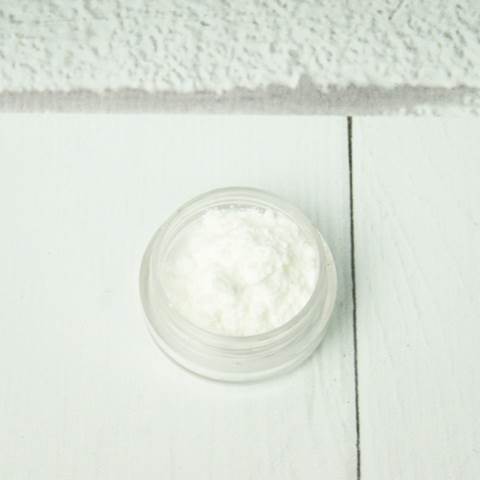




 Add to cart
Add to cart Buy in 1 click
Buy in 1 click

 Add a review
Add a review To favorites
To favorites To compare
To compare




